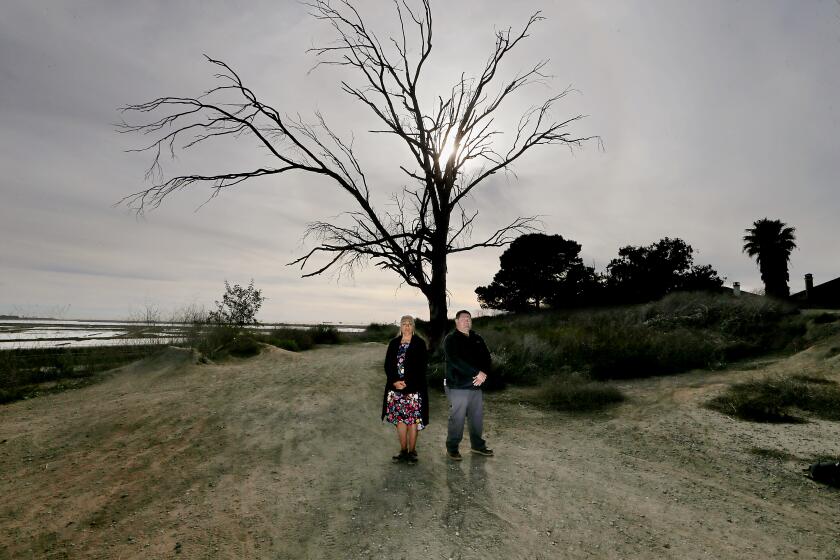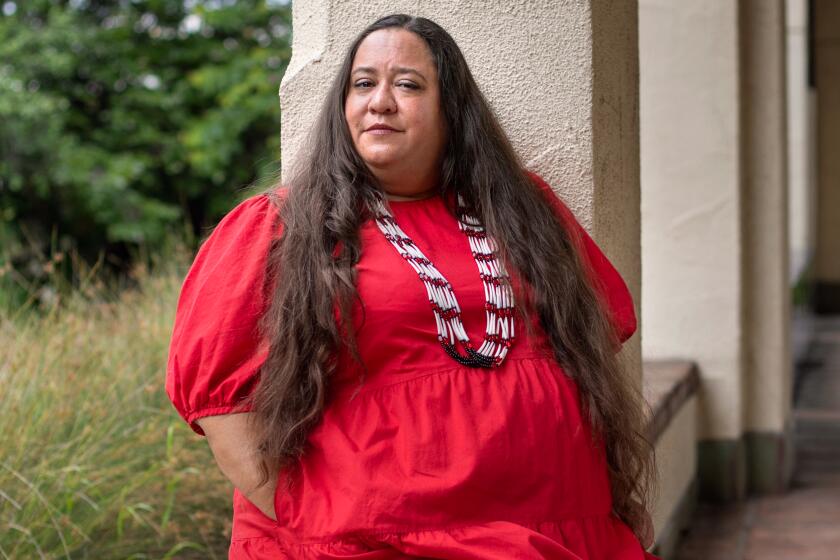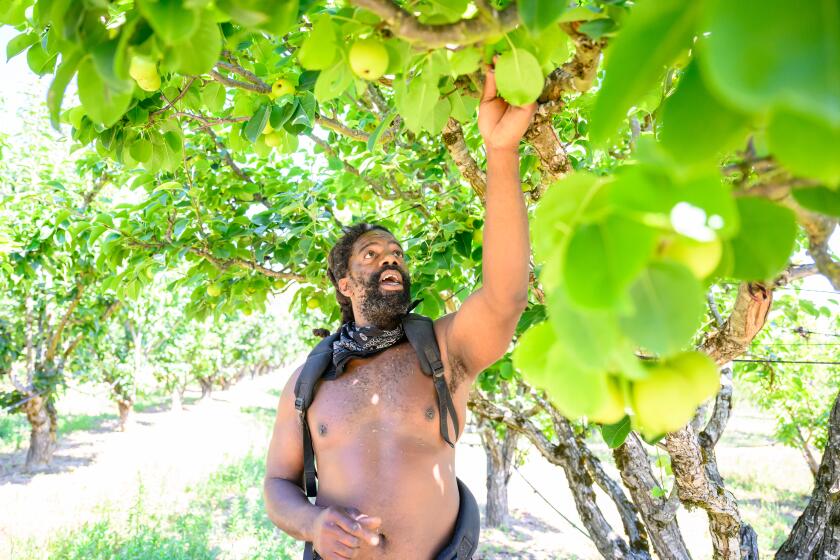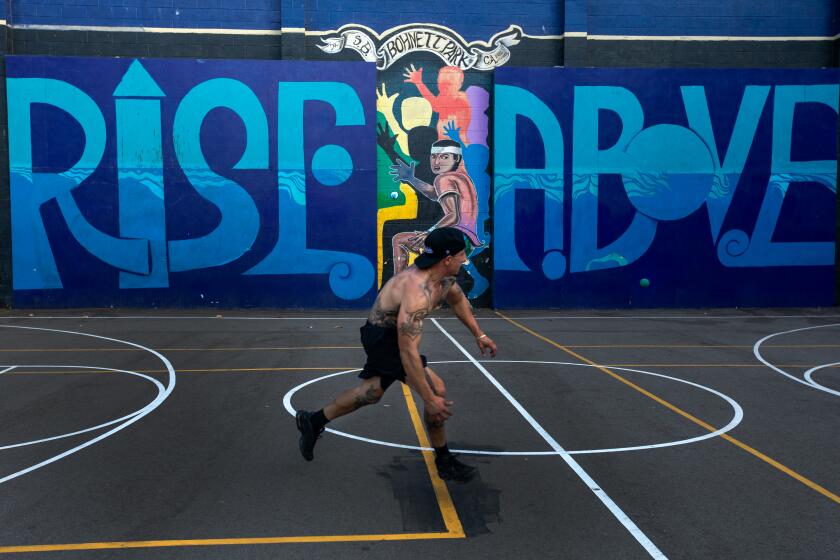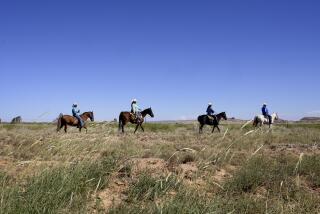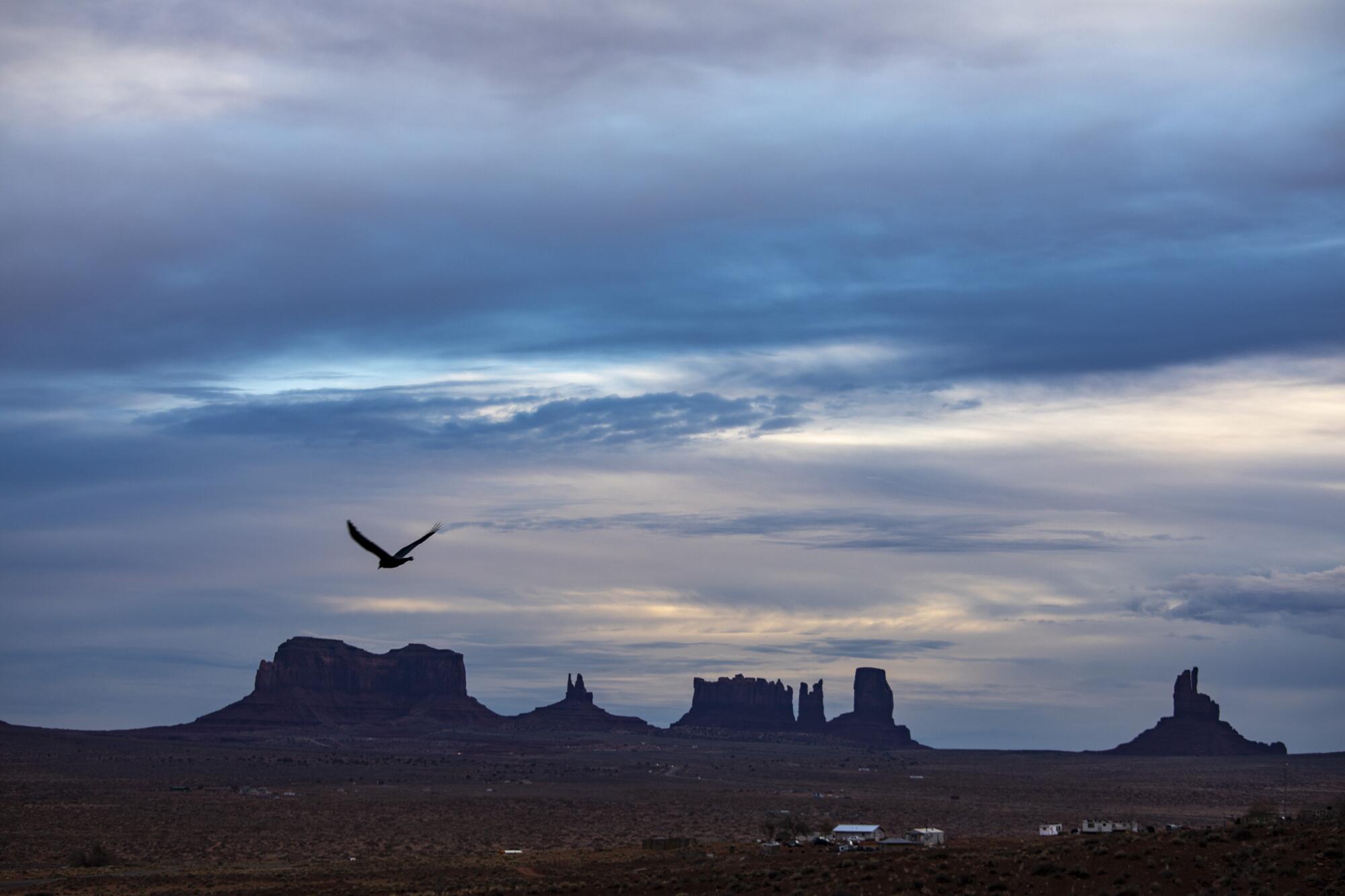
DENNEHOTSO, Ariz. — Gilarya Begaye looks out across the brush-blanketed pastures, red-dirt plains and flat-topped mesas that surround her home in the Navajo Nation.
“Everywhere I’ve ever moved, it never felt like home,” says Begaye, 36. “My heart’s always been here.”
But for all the ways that living on the reservation feeds the soul, one basic necessity has been sorely lacking for Begaye, her six children and other Navajos: water.
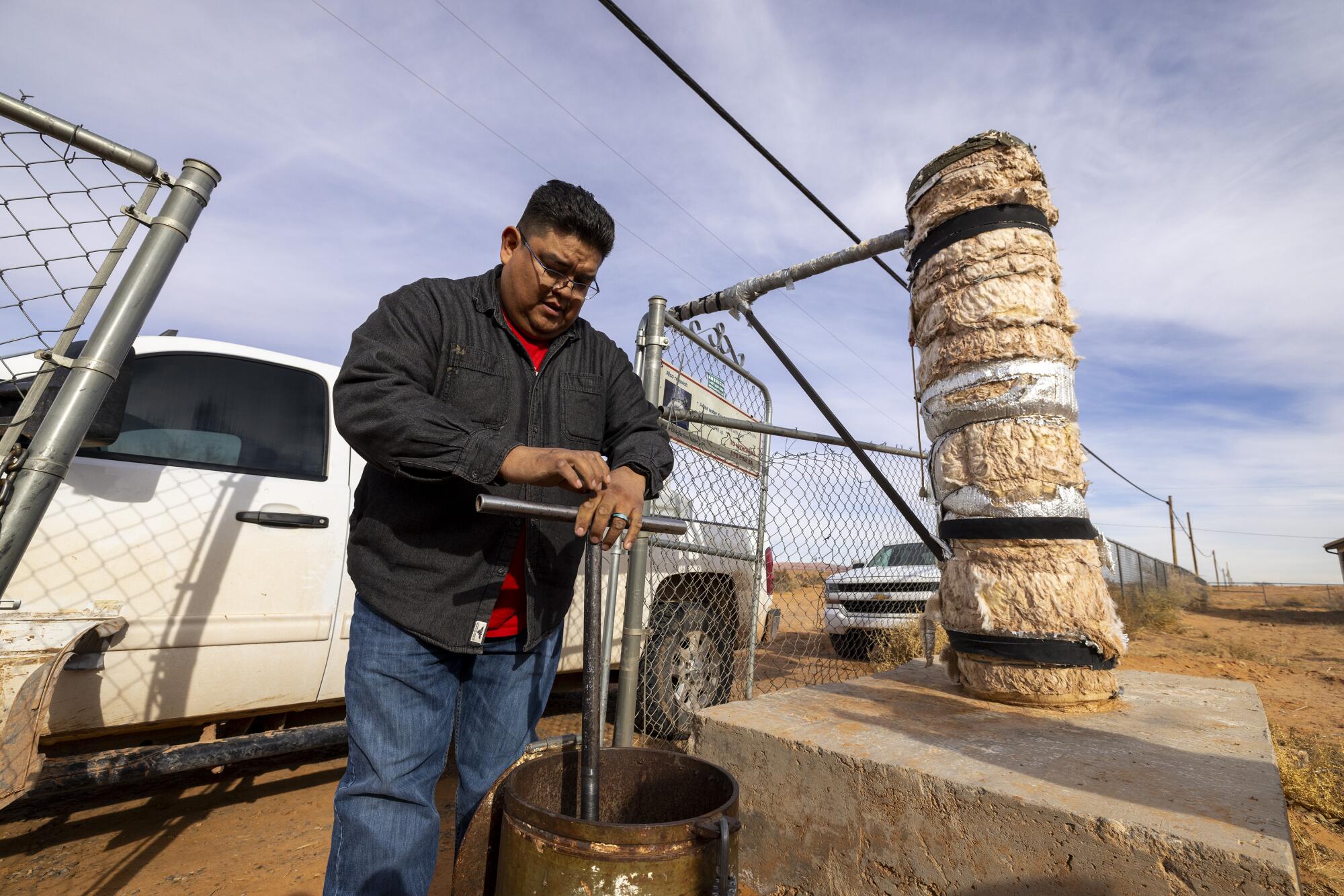
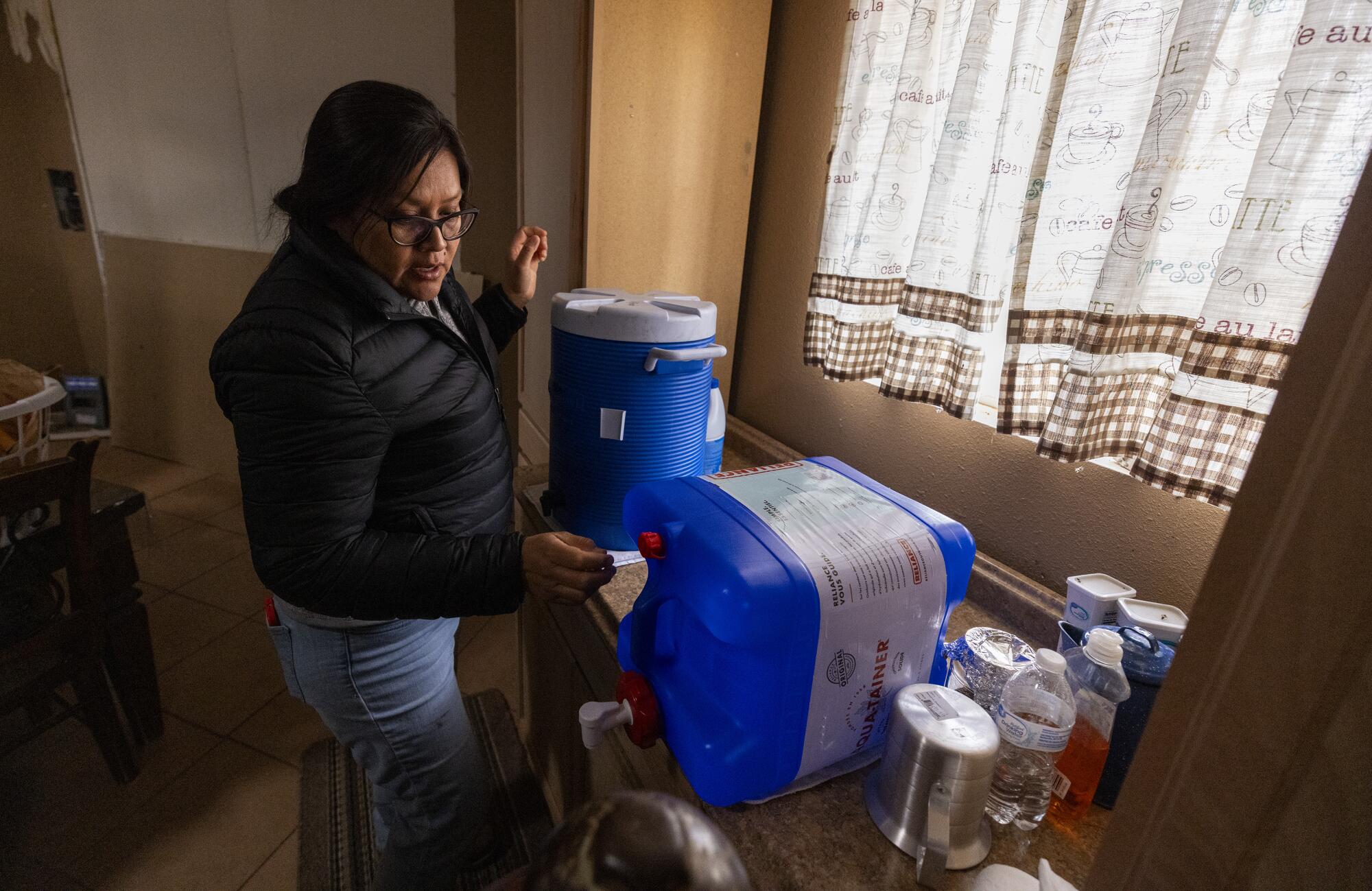
The Navajos live in the same 1,400-mile-long Colorado River Basin that brings fresh water to millions in Southern California, yet about 30% of homes on the reservation were built without indoor plumbing.
With the absence of pipes connecting homes to a water source in this isolated corner of the reservation, many Navajos must spend hours each week driving to a community center in the tribal settlement of Dennehotso to refill portable tanks.
While California wrangles with other Western states over the drought-stricken Colorado River’s water supply, Navajo water rights advocates estimate that the 175,000 members who live on the reservation subsist on average on just 5 to 10 gallons a day per person. Compare that to the 76 to 100 gallons of water the Environmental Protection Agency says most Californians use daily.
Orange County returned 6 acres of land to the Acjachemen and Tongva people. Tribal leaders say it’s a small step in a movement to protect their heritage.
Some see hope in a proposed landmark agreement that would settle all outstanding water rights disputes between the Navajo, Hopi and San Juan Southern Paiute tribes and the state of Arizona. If the final terms of the agreement are approved by the tribal government, the Navajos will ask Congress for $5 billion in federal funding to expand the reservation’s water delivery infrastructure, says Navajo Nation Council Speaker Crystalyne Curley.
“In the past, we’ve tried to get all of the parties to the table to secure water rights, which since time immemorial we’ve had to fight for,” Curley says.
The Navajos aren’t the only ones who’ve been left behind. According to researchers from the University of Arizona and Kings College London, in 2021 nearly half a million American households nationwide did not have running water, with people of color and renters among the hardest hit.
The failure to extend water service to all Indigenous Americans is especially galling given their traditional role as nature’s caretakers, says Heather Whiteman Runs Him, associate clinical professor and director of the Tribal Justice Clinic at the University of Arizona in Tucson.
“We respect water in ways that many other Americans don’t,” says Whiteman Runs Him, a Crow tribal member from Montana. “The vast majority of Americans take water access for granted. You pay a water bill but don’t think about what you’re paying for.”
With no running water at home, Begaye, a single mother, devised a system.
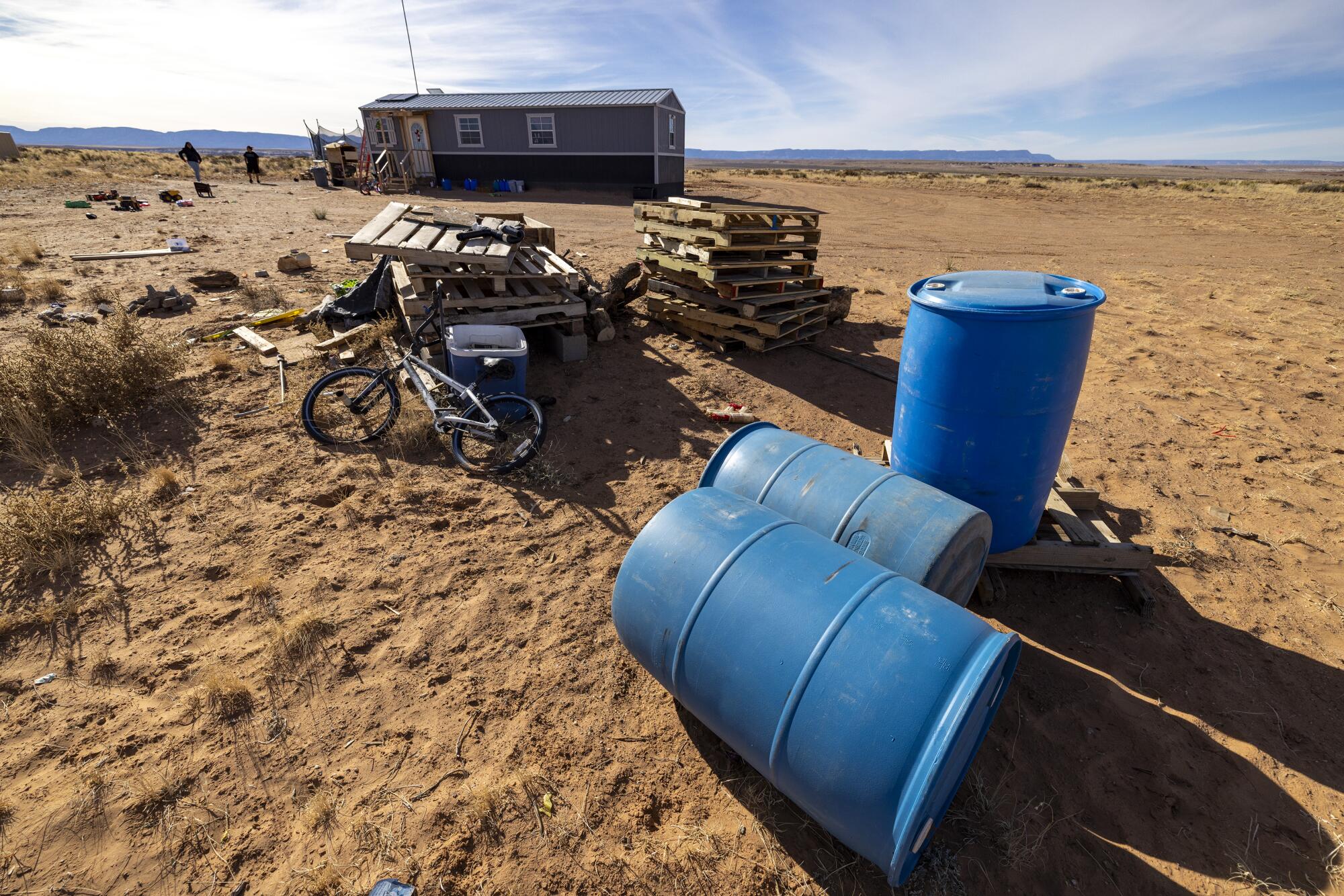
“I have some 55-gallon water barrels — also some 5-gallon water barrels,” she says. “The smaller ones, we’d usually take down to my mom’s house down the hill and refill them, because she has a 250-gallon water tank.”
Begaye’s mother would drive to her daughter’s house in her flatbed truck to refill the larger barrels before making the trek into town to replenish her own tank.
Recently, Begaye and about 200 other homeowners in Northeast Arizona near the Four Corners, where Arizona, New Mexico, Utah and Colorado meet, received free water systems, including cisterns, pipes and kitchen sinks with functioning cold-water taps, through a Los Angeles-based nonprofit, the DigDeep Right to Water Project.
In the previous years, tasks such as cooking, cleaning and bathing were complicated; they required the family — kids included — to venture out in the bracing chill of winter and scorching heat of summer to siphon water into jugs to bring indoors.
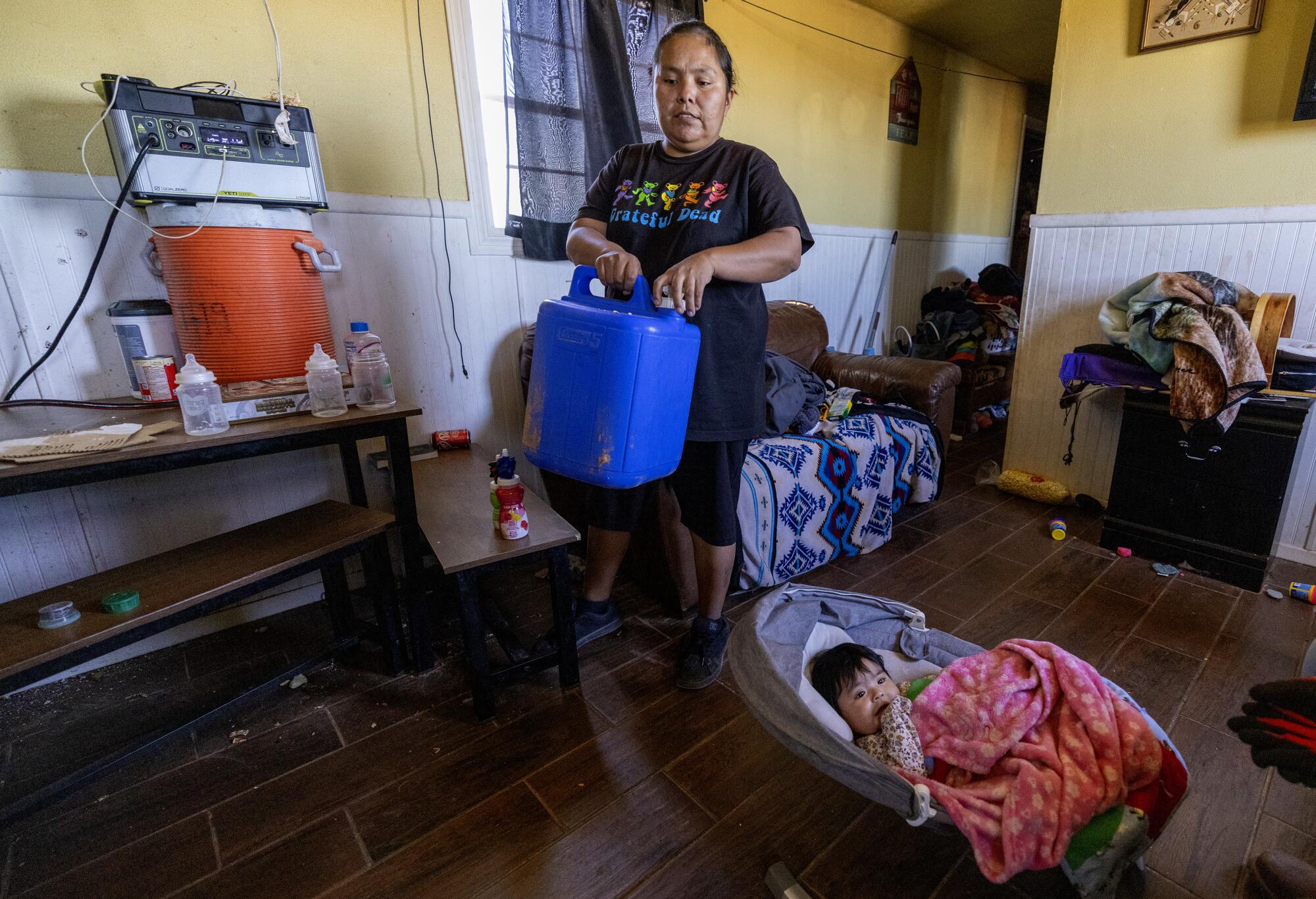
In winter, Begaye was careful to leave the small jugs slightly open to prevent them from cracking in freezing temperatures. Summer brought another hazard — snakes that took shelter under the larger containers.
Some of Begaye’s neighbors collect water from vessels meant for livestock — boiling and adding purification tablets to make it safe to use. The lack of sewer lines means outhouses are a common sight.
The Navajos take this hardship in stride. Water may be scarce, and climate change may be ushering in more extreme droughts, but this landscape fortifies them.
Dennehotso, where Begaye lives, lies an hour away from the red-rock formations of Monument Valley, which were shaped by eons of water and wind erosion but resemble artworks chiseled by a sculptor.
According to their creation story, Navajos were born out of the same earth and stone.
::
The disparity in water access between Navajo tribal members and other Americans at large was dramatized in a recent U.S. Supreme Court ruling.
Brushing aside a host of treaties and legal precedents dating to the formation of the reservation on a fraction of Navajo ancestral territory in 1868, the court determined that the federal government is not obligated to help the tribe get more access to water from natural sources such as the Colorado River Basin.
“That disregard for the humanity and human rights of people who live in the Navajo Nation — it should be disturbing to every American that these conditions persist,” Whiteman Runs Him says.
1
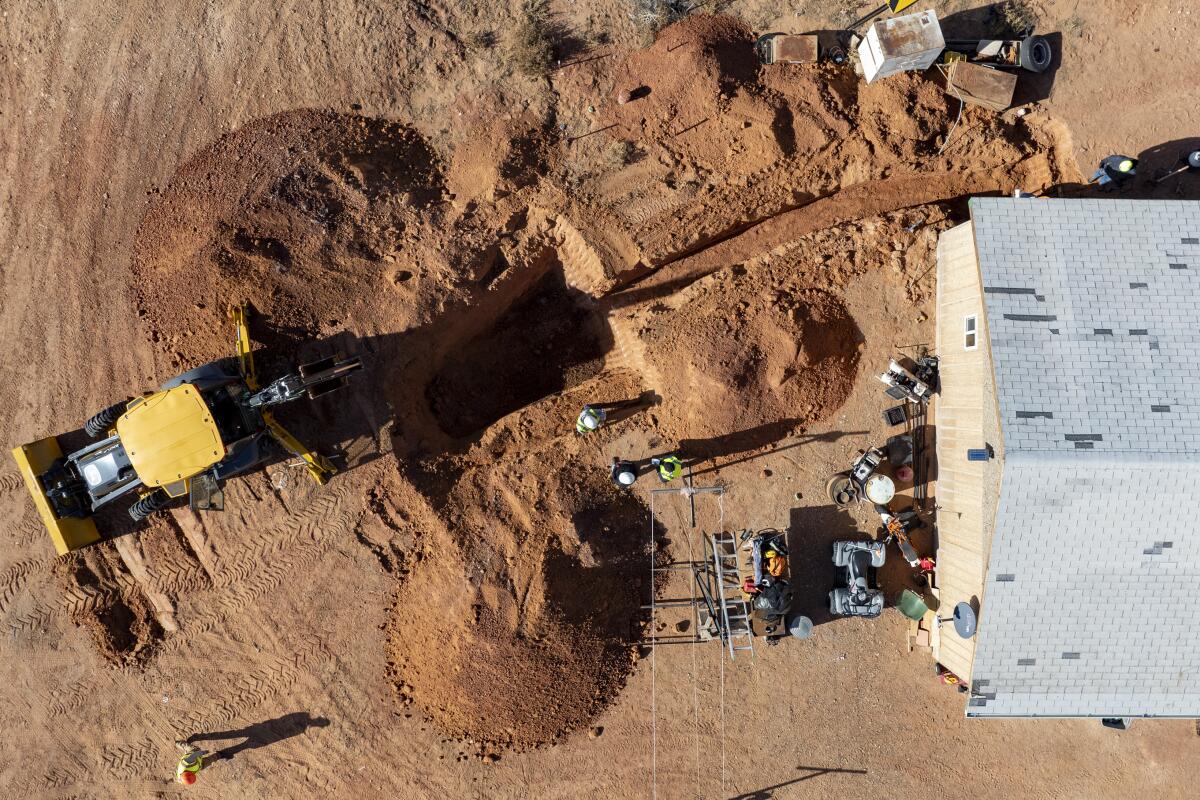
2
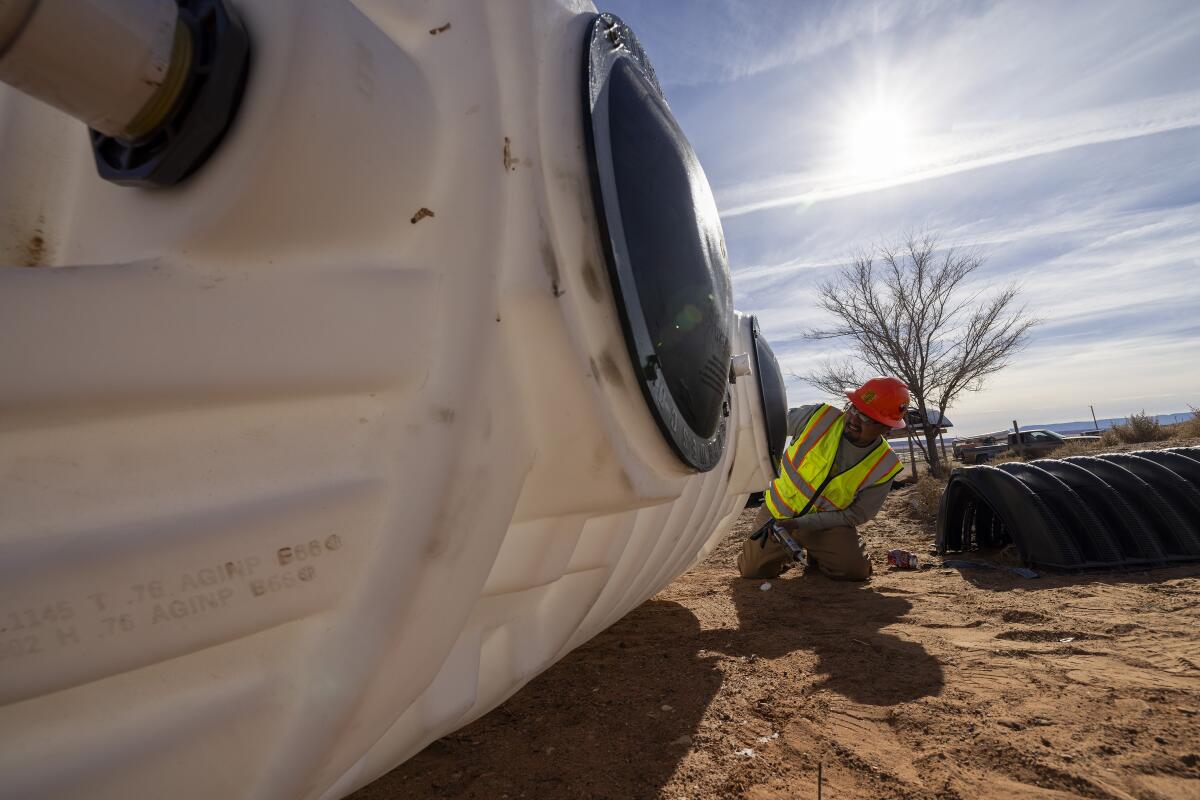
3
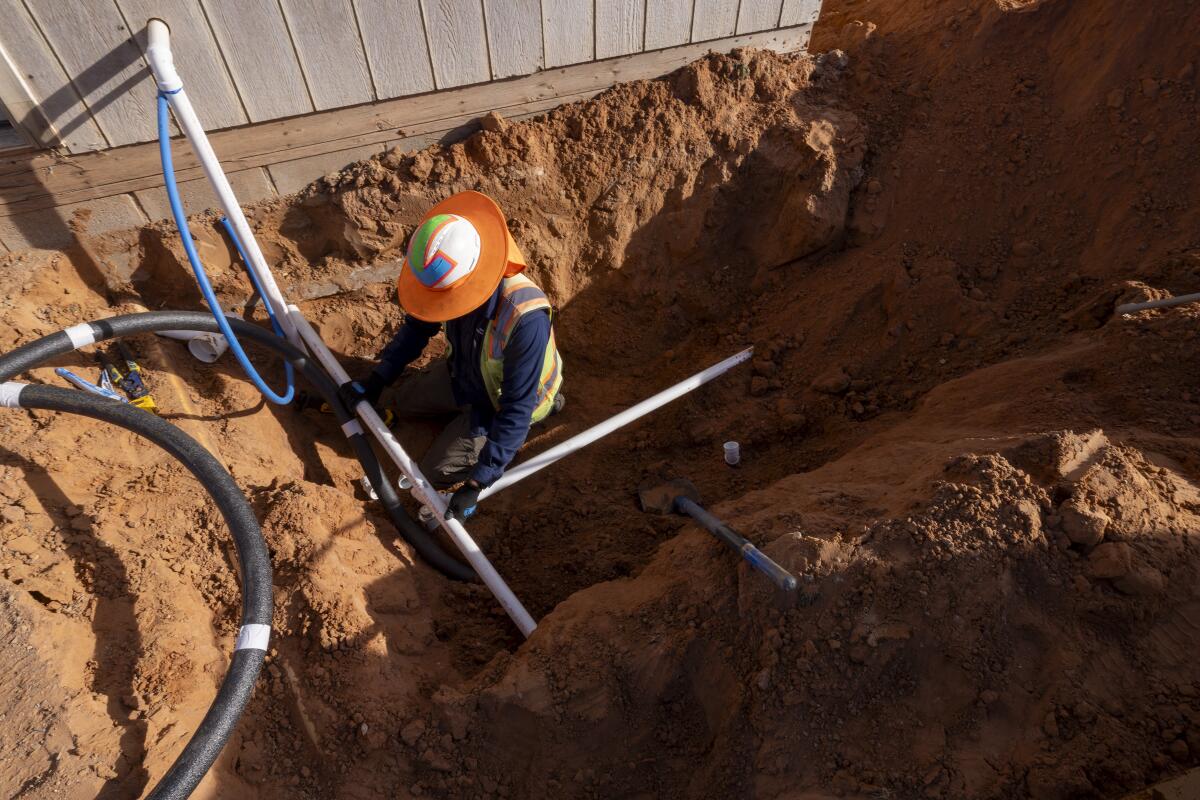
1. DigDeep employees excavate for a new water system at Everett Blackwater’s Navajo Nation home in December in Dennehotso, Ariz. 2. Nathaniel Sneddy seals a tank lid with silicone as he helps install the water system. 3. Donovan Smallcanyon fits new drainage pipes in a ditch.
Whiteman Runs Him filed an amicus brief in the Supreme Court case on behalf of a coalition of Navajo supporters, arguing that water access is not just critical for public health and sanitation, but that it is also a universal human right. The Biden administration appeared to support this view when it announced on Tuesday that the Department of Interior’s Bureau of Reclamation would make $320 million available to federally recognized tribes in the western U.S. to help restore and revitalize their water infrastructure and expand access to clean drinking water.
The U.S. government hasn’t always been a benign presence in Indian country. It has a long track record of threatening the Navajos’ existence.
Thousands of tribal members were removed from their lands during the “Long Walk” — a brutal, 400-mile journey to an internment camp in central New Mexico that was part of Kit Carson’s scorched-earth campaign of 1863. To make their homeland unlivable, he poisoned the tribe’s wells. Later, coal and uranium companies tainted the water with runoff and toxic spills.
Homeowners in Dennehotso seem more keen to talk about their will to persevere than relive the indignities that have scarred their land and oppressed their people.
Living here, Begaye says, makes her feel closer to her late grandmother, who used to herd sheep among windmills that dot the landscape. All around, horses and cows roam in pastures crisscrossed by nameless dirt roads.
Angela Mooney D’Arcy of the Sacred Places Institute for Indigenous Peoples says Native Americans and other historically oppressed Californians should share in the fight for reparations.
Begaye purchased her small plot three years ago, partly with savings earned from weaving traditional Navajo rugs, sewing, carpentry jobs and baking. The home, which she converted from a storage shed, has a small kitchen with a propane stove. That opens to a living room and an area for beds in the back.
Space is tight, but she appreciates that her children — ages 6 months to 16 — can play in the fields that stretch beneath the startlingly blue sky.
As her baby, Mia, coos in her rocker, Begaye recounts her 4-year-old son Alex’s excitement when he turned on the tap for the first time. It was as if he had performed magic.
“Just seeing the look on his face, it made me really happy,” she says.
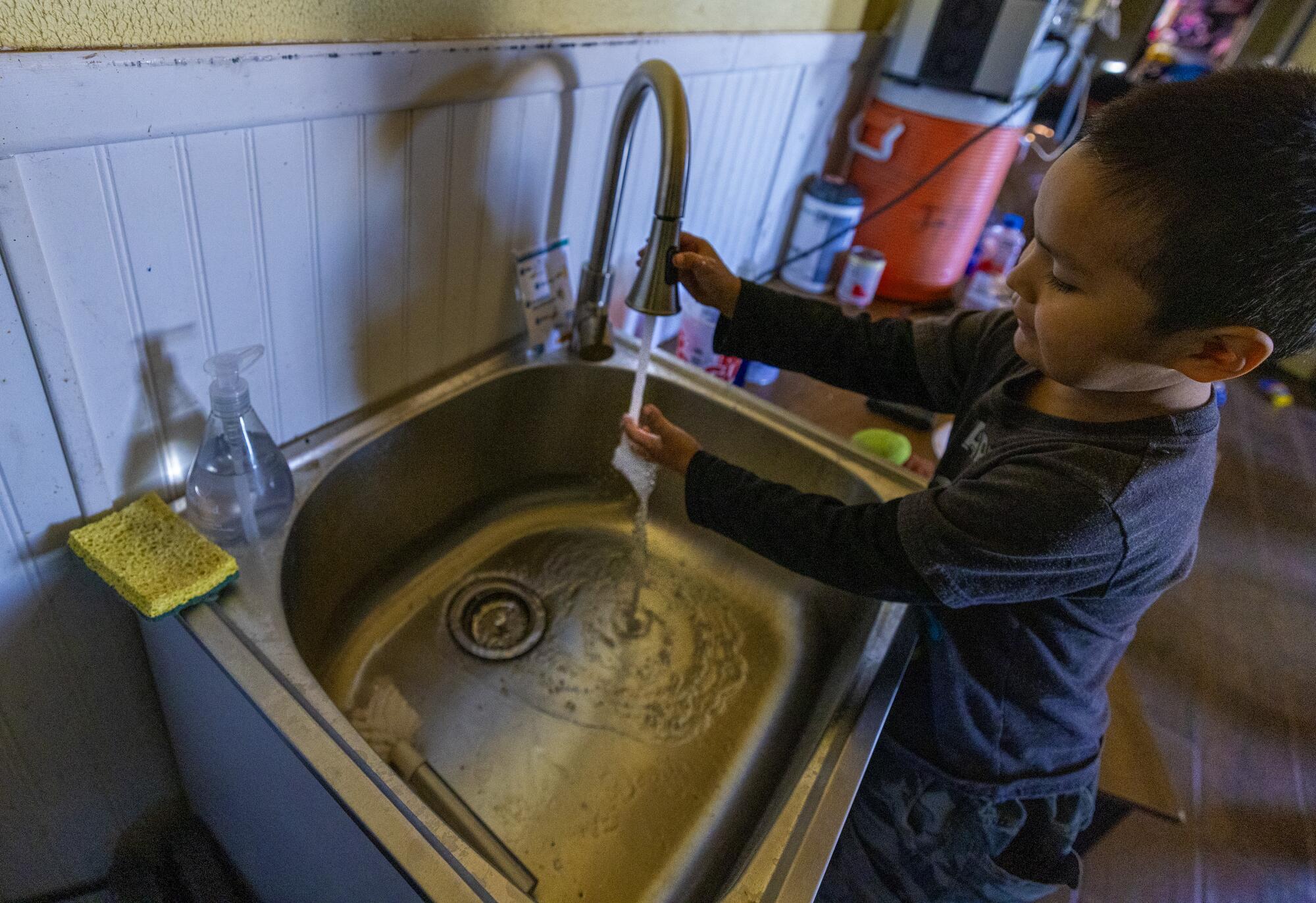
On this day, Shanna Yazzie, DigDeep’s regional project manager, has come with a gift — a stepladder to allow the smaller children to use the sink.
Alex steps up, turns on the tap and watches as water swirls down the drain. Begaye looks just as charmed.
Begaye holds up a blue, 5-gallon jug. A vessel this size would provide two or three showers for her family. The average American uses the equivalent of three of these jugs for a single shower.
::
A 15-minute drive along dirt and gravel roads leads to the home of one of Begaye’s uncles, where a DigDeep crew is at work.
Sunlight drenches one of the organization’s water trucks. Printed on the side is a saying in the tribal language: Tó éí ííná át’é”
Water is life.
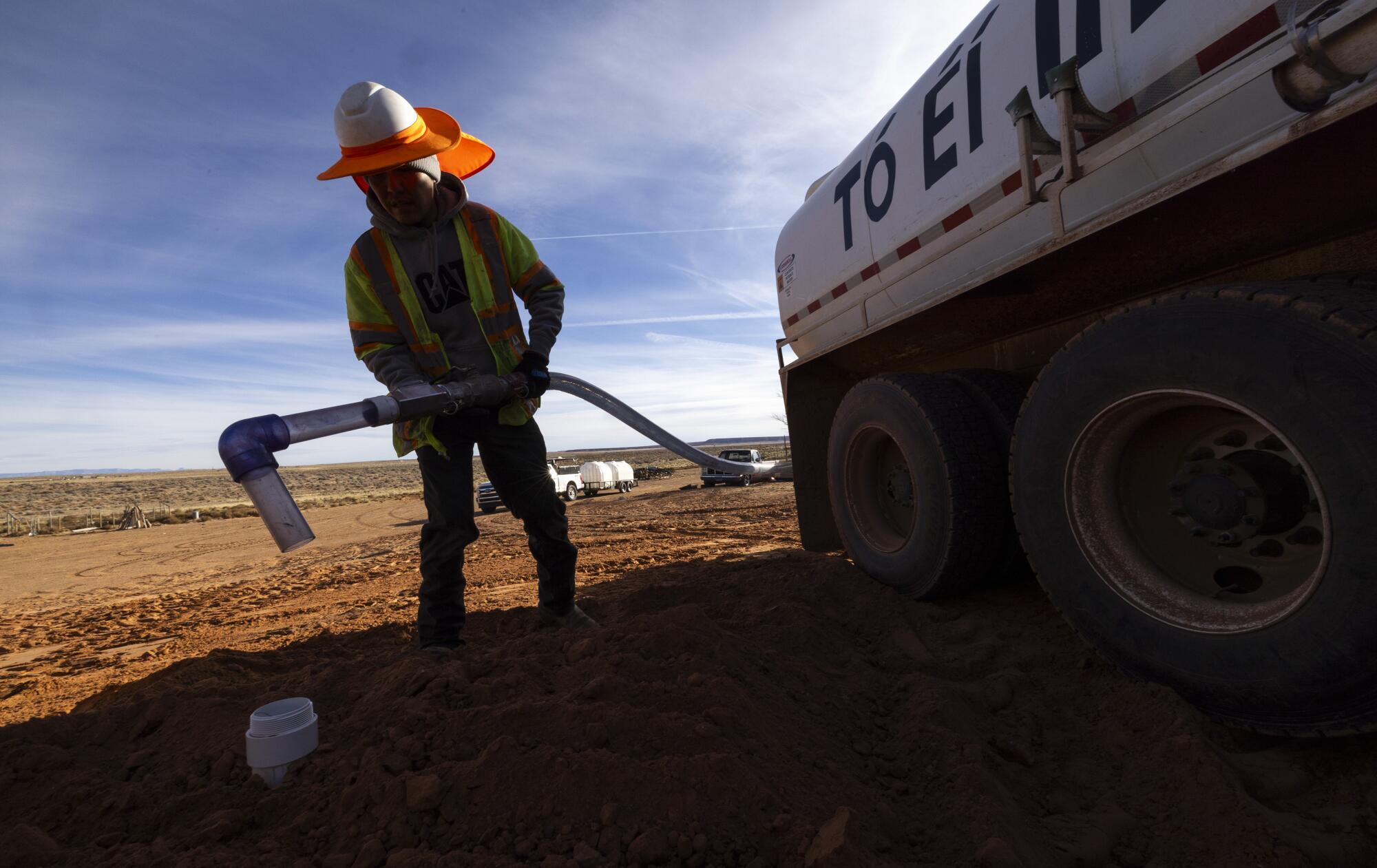
It takes a few minutes before Everett Blackwater, 63, feels comfortable opening up to a non-Native stranger about how his own life has been shaped by the difficulty of accessing water.
Dressed in a hoodie and knit cap, he watches a backhoe operator dig a pit for a cistern, which will connect to the new sink that will be installed in the kitchen.
Blackwater, his wife and his adult son — the only one of seven siblings who still lives at home — had been hauling water from Dennehotso each month, making the half-hour trek to fill a 225-gallon tank.
Inspired by Octavia Butler’s Afrofuturist fiction, a Sonoma County farmer helps Black Californians connect with nature and learn lessons in climate resilience.
Indoor plumbing was unheard of when Blackwater was growing up.
He points toward an old windmill and says he and other family members resorted to collecting their drinking water from a livestock well each weekend.
The pickup truck he uses today is a massive improvement.
“Back then, when I was a kid,” he says, “it was a donkey.”
Other residents share stories of resolve at the Navajo Chapter House, the community center in Dennehotso where they come to load up on water.
Tribe members pay a sliding fee to siphon water, depending on the size of their barrels — less than $10 for most customers. Each week, 100 to 200 customers arrive to refill their water vessels, says Maricelyn Smith-Williams, the center’s manager.
Public showers are available for residents who lack indoor plumbing — $3 per visit, with the elderly welcome to bathe for free. Five-gallon water jugs are also given to those who need them.
Outside, Leland Interpreter, the grandson of a World War II Navajo Code Talker, fills a 425-gallon tank in his truck’s flatbed. He drives here every three or four days.
Interpreter, 40, says most of the water goes to his livestock — three dozen cows, a dozen sheep and three horses.
“They say that livestock is more important to us” than people, he says.
A historian in Santa Barbara conducts tours to show that Latinos, who make up more than a third of the city’s population, are central to its existence.
Next to pull in is Irene Yazzie, 71. It took over an hour to drive from her home 10 miles away in the outback. Her late husband used to make these water runs.
“Now it’s my job,” says Yazzie, no relation to Shanna. She comes to fill her 250-gallon tank about once a week — twice a week when her grandchildren visit.
The wear-and-tear on the truck is the biggest downside, she says. And she must be careful to plan her trips to avoid the occasional rains that can wash out dirt roads.
Speaking in both Navajo and English, Yazzie says no one has running water around where she lives.
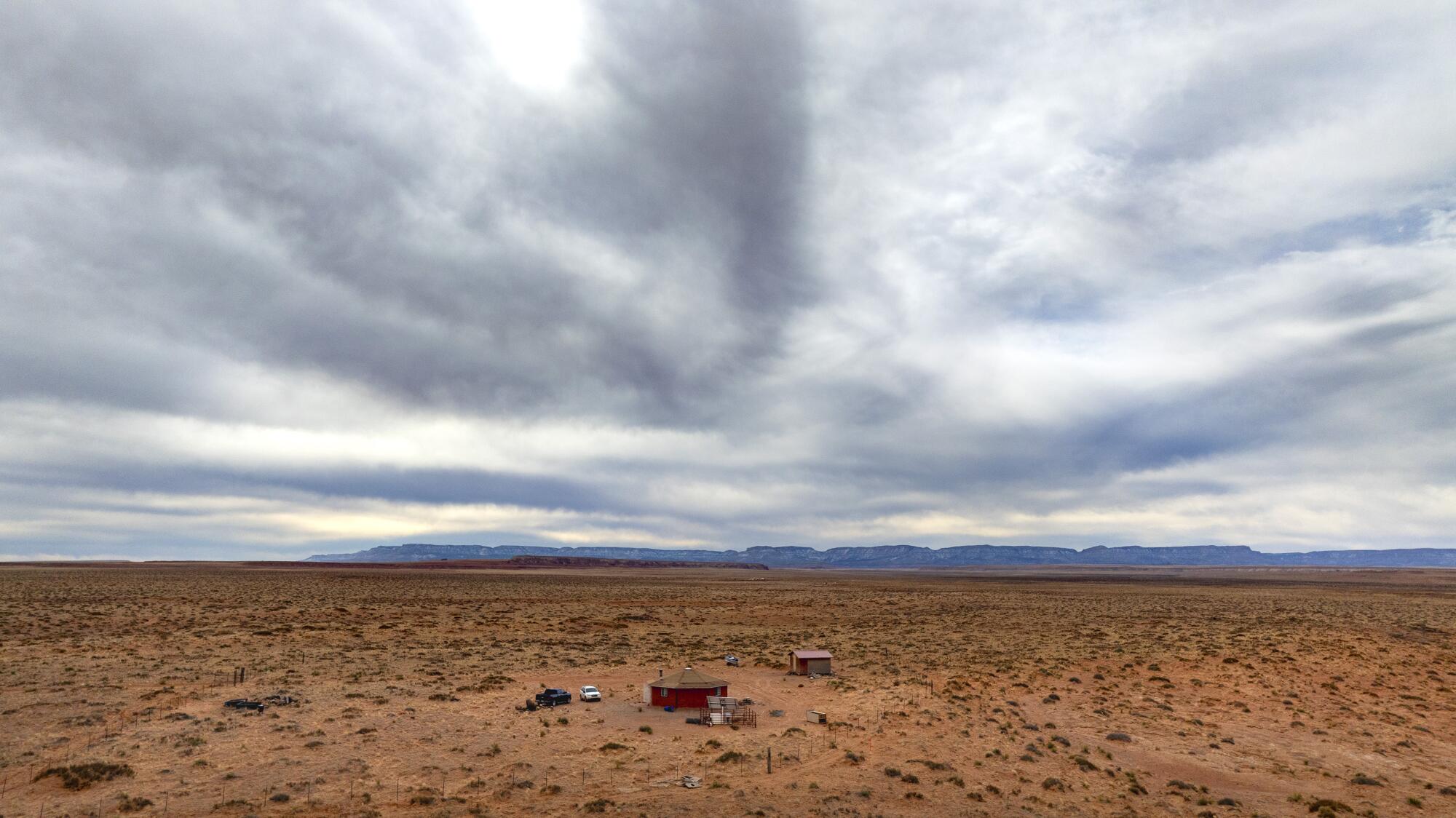
Smith-Williams says this lack of indoor plumbing reflects a broader socioeconomic crisis.
Poverty is widespread in Dennehotso and jobs are as lacking as indoor taps, she says. Families can’t afford to install plumbing on their own or replace deteriorated cisterns. Permits needed for any water pipe construction require navigating the tribe’s cumbersome bureaucracy.
With so many obstacles, Smith-Williams says, it’s a challenge to build a better life while remaining on the reservation.
Back at Begaye’s house, she says she is more focused than ever on the future.
Her home loan is paid off and she’s about to get free internet service installed so her older children can do homework online. She plans to go back to school in the fall to learn a trade.
Begaye stands by a loom where she’s weaving a rug that will depict the Navajo Tree of Life — a corn stalk with radiating leaves and sturdy roots.
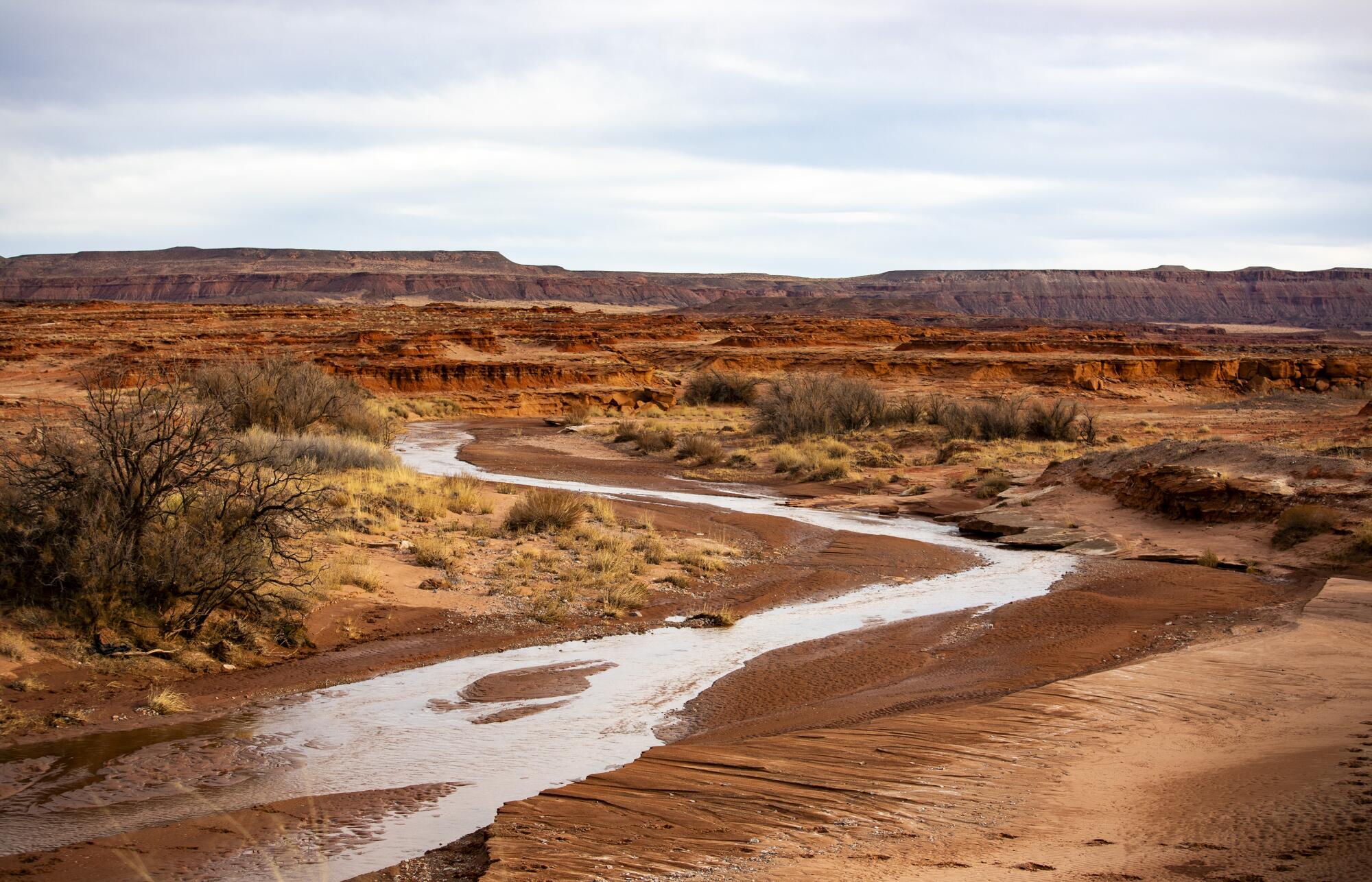
The tree represents the Navajo’s emergence from the lower realms of the earth after a great flood.
It also signifies something that inspires Begaye in her own life — her people’s unbreakable connection to this land.
